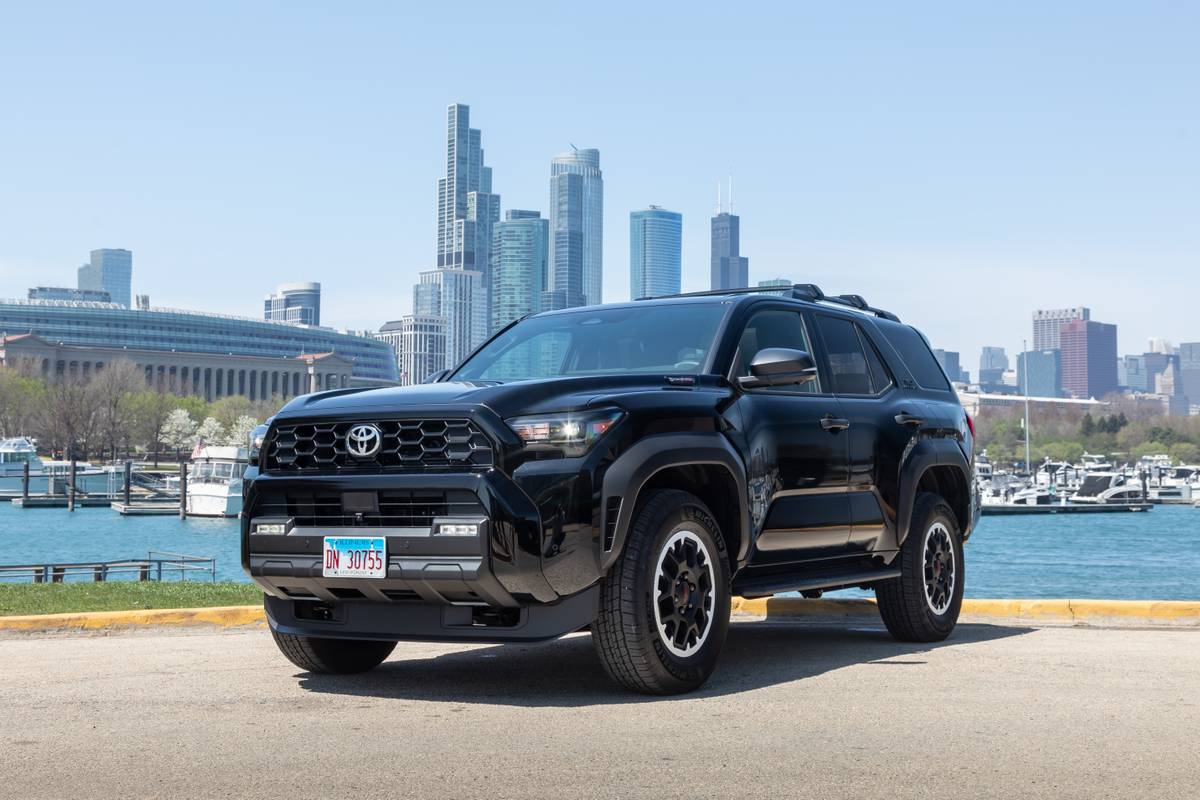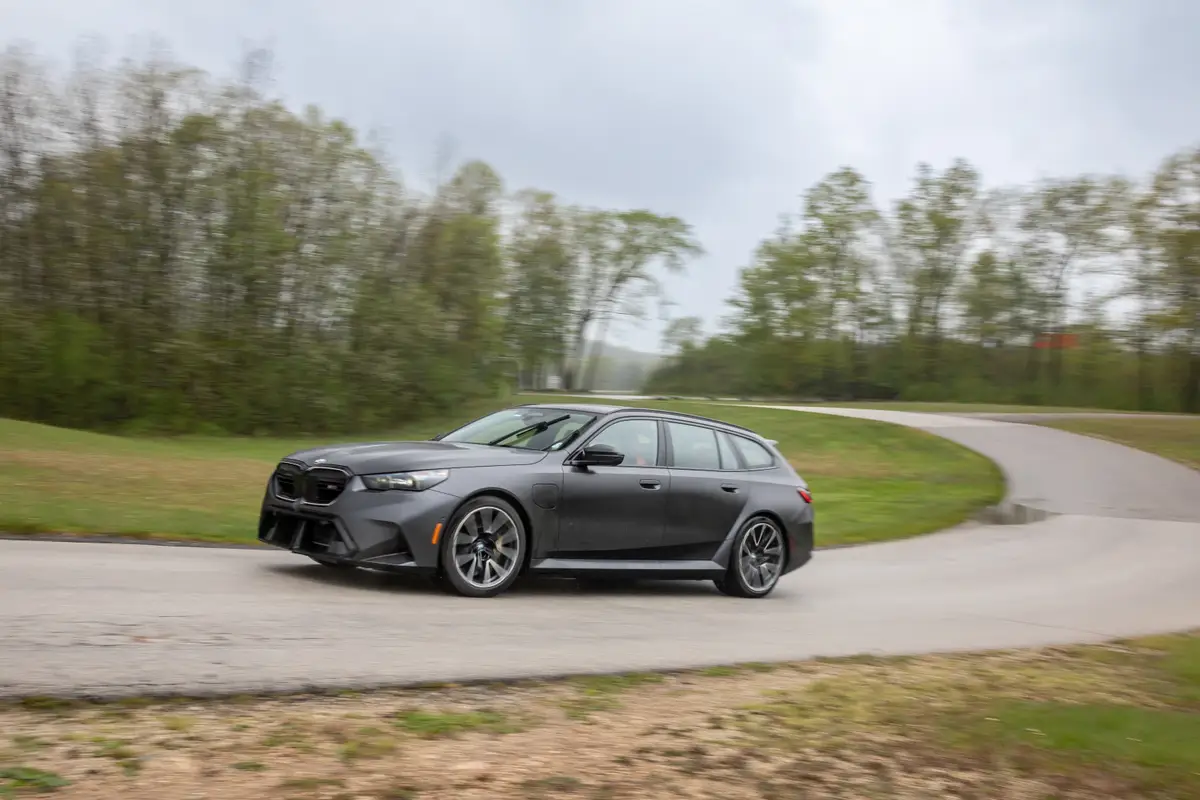2015 Buick Regal: Car Seat Check

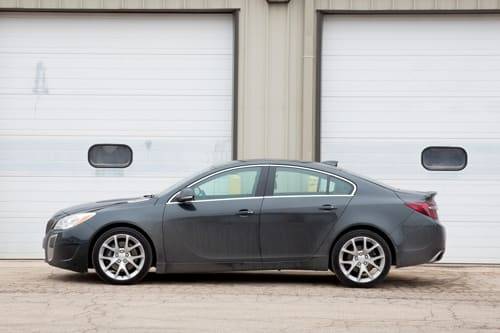
Buick’s midsize sedan, the Regal, lives up to its name with its refined looks and powerful turbo four-cylinder engine. Parents will be thrilled with all these attributes as well as its ability to handle child-safety seats. With 37.3 inches of rear legroom, the Regal made easy work of car-seat installation.
How many car seats fit in the second row? Two
What We Like
- The Regal’s leather seats are stiff, but we were able to easily access the two sets of lower Latch anchors because they were positioned just inside the seat bight, where the back and bottom cushions meet.
- The rear-facing infant and convertible seats both fit well in the Regal’s backseat. We didn’t need to move the front passenger seat forward to accommodate either car seat.
- The forward-facing convertible installed easily in the Regal. The top tether anchors — three are on the rear shelf — were easy to use.
What We Don’t
- While the seat belt buckles are on stable bases, they’re difficult to use because they sink into the seat cushion when inserting the seat belt buckle. One of our editors’ 4-year-old daughter couldn’t buckle up on her own because of this poor design.
- Our test car, the GS trim, had bolstered seats that caused our high-back booster seat to sit at a slight angle.

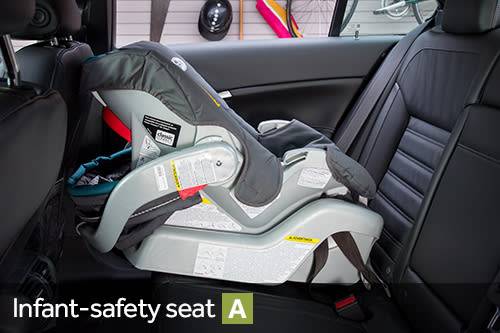
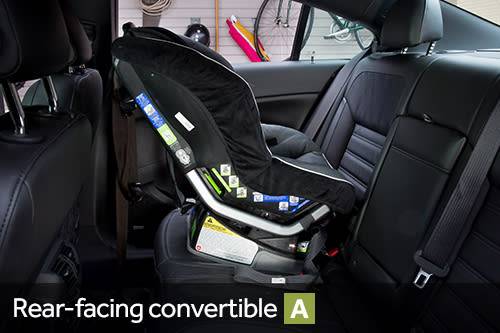
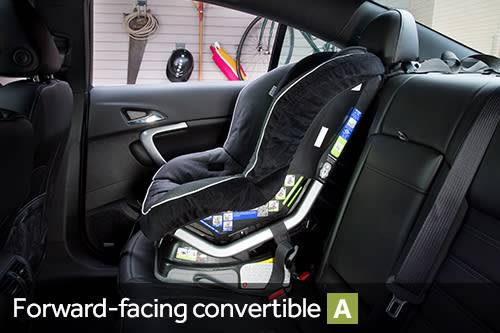
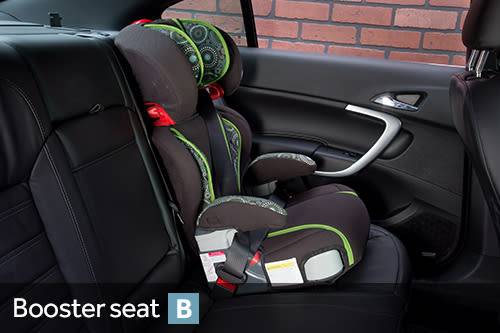
Grading Scale
A: Plenty of room for the car seat and the child; doesn’t impact driver or front-passenger legroom. Easy to find and connect to Latch and tether anchors. No fit issues involving head restraint or seat contouring. Easy access to the third row.
B: Plenty of room. One fit or connection issue. Some problems accessing third row when available.
C: Marginal room. Two fit or connection issues. Difficult to access third row when available.
D: Insufficient room. Two or more fit or connection issues.
F: Does not fit or is unsafe.
About Cars.com’s Car Seat Checks
Editors Jennifer Geiger and Jennifer Newman are certified child safety seat installation technicians.
For the Car Seat Check, we use a Graco SnugRide Classic Connect 30 infant-safety seat, a Britax Marathon convertible seat and Graco TurboBooster seat. The front seats are adjusted for a 6-foot driver and a 5-foot-8 passenger. The three child seats are installed in the second row. The booster seat sits behind the driver’s seat, and the infant and convertible seats are installed behind the front passenger seat.
We also install the forward-facing convertible in the second row’s middle seat with the booster and infant seat in the outboard seats to see if three car seats will fit; a child sitting in the booster seat must be able to reach the seat belt buckle. If there’s a third row, we install the booster seat and a forward-facing convertible. To learn more about how we conduct our Car Seat Checks, go here.
Parents should also remember that they can use the Latch system or a seat belt to install a car seat, and that Latch anchors have a weight limit of 65 pounds, including the weight of the child and the weight of the seat itself.
Cars.com photos by Evan Sears

Editor-in-Chief Jennifer Newman is a journalist with more than 25 years of experience, including 15 years as an automotive journalist at Cars.com. Jennifer leads the Editorial team in its mission of helping car shoppers find the vehicle that best fits their life. A mom of two, she’s graduated from kids in car seats to teens behind the steering wheel. She’s also a certified car-seat technician with more than 12 years of experience, as well as member of the World Car Jury, Automotive Press Association and Midwest Automotive Media Association. LinkedIn: https://www.linkedin.com/in/jennilnewman/ Instagram: @jennilnewman
Featured stories
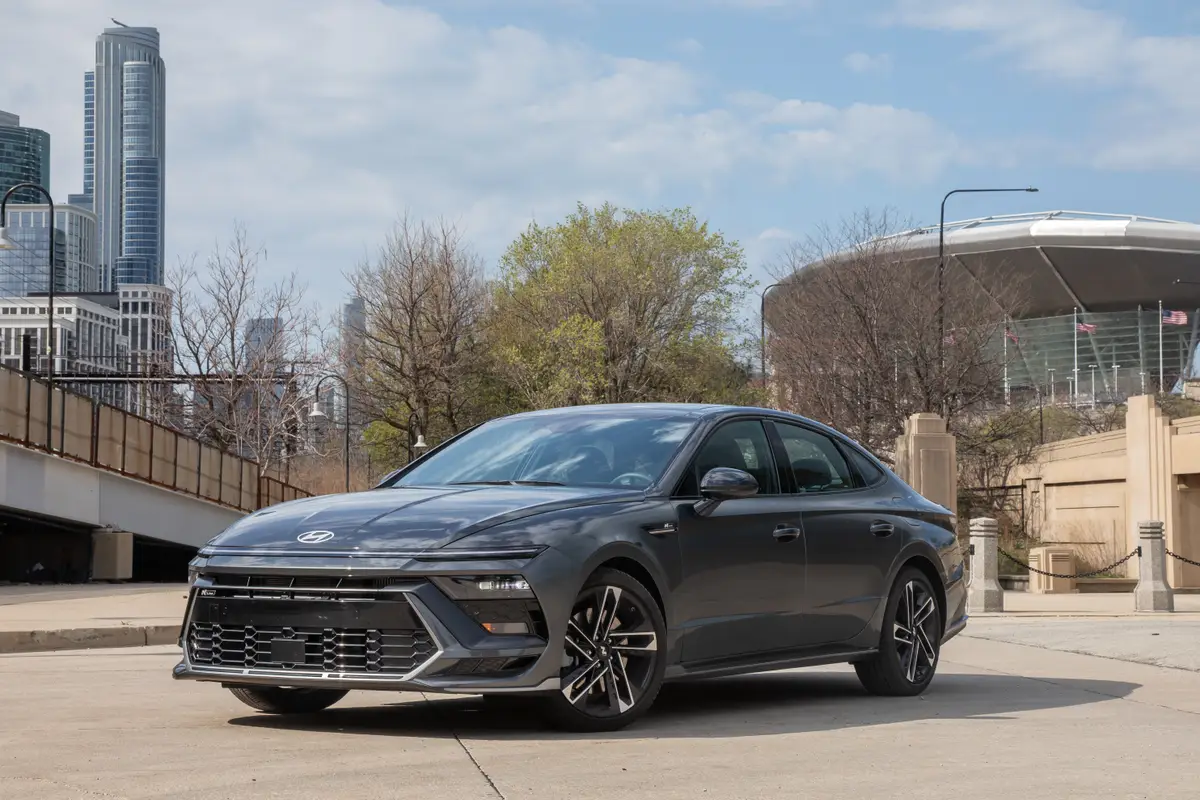
2025 Hyundai Sonata N Line Review: Banish Boring

